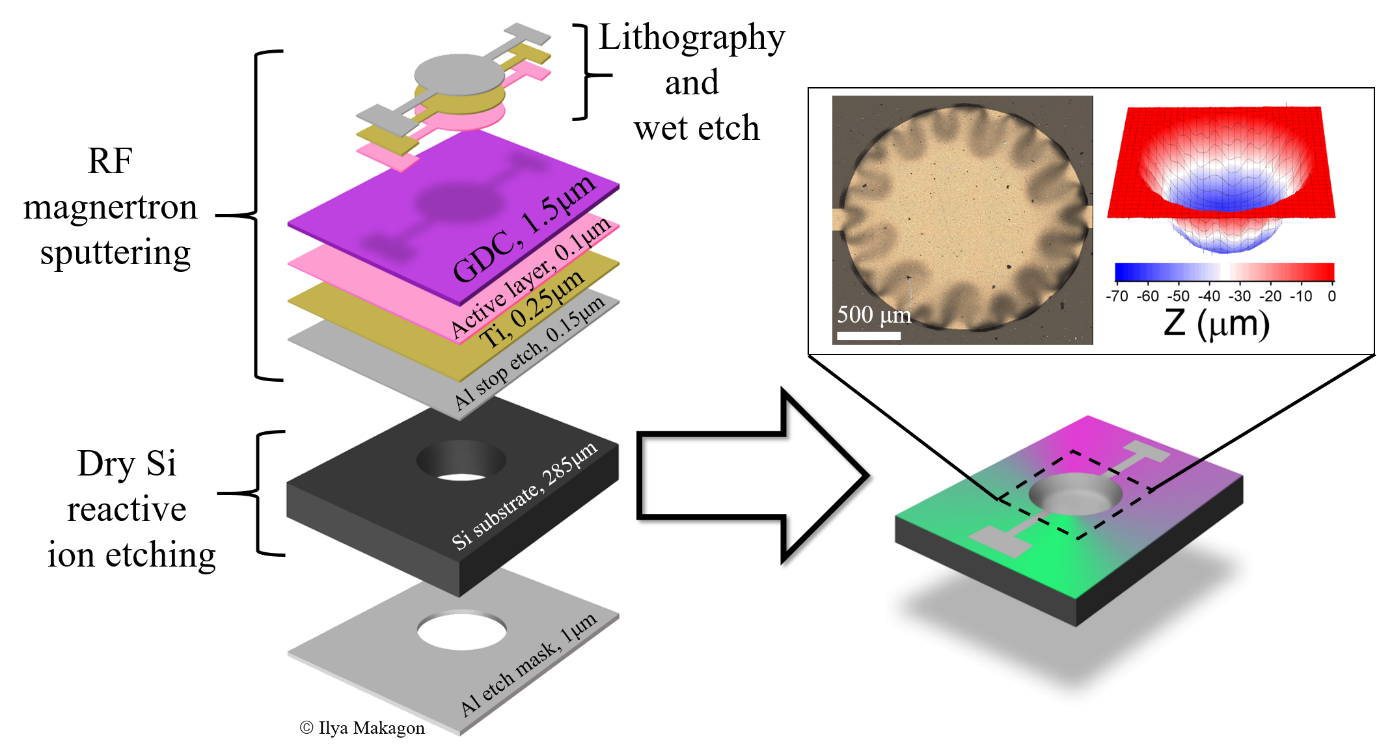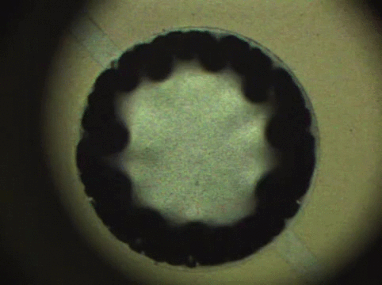The electro chemo mechanical effect – from an unwanted side effect into an environmentally safe actuator
Many materials develop considerable mechanical stress upon relatively small changes in composition. When this compositional change is driven by an electrochemical reaction, it is termed electro-chemo-mechanical (ECM) coupling. This specific type of chemical expansion is usually considered a detrimental side effect to the operation of batteries and fuel cells as it can lead to cracking, delamination and catastrophic failure. We have found a way to use this seemingly harmful phenomenon as a useful actuation mechanism. Through the use of standard Si microfabrication techniques we have developed an ECM based actuation device operating at room temperature. The device is a self-supported thin film of GdxCe1-xO2-x/2 (GDC) solid electrolyte combined with specifically designed metal\ceramic composite active layers undergoing mechanical deformation under bias. ECM actuators can be used as tunable capacitors and micro-switches in electronic circuits, and even as microfluidic valves and pumps in biomedical devices. They are built from non-toxic materials and can be an environmentally safe alternative for lead based materials commonly used for actuation devices today.
Schematic representation of ECM device structure, optical micrograph and 3D optical profilometry image depicting the shape of the self-supported structure.
Key publications
Mishuk E., Ushakov A., Makagon E., Cohen S. R., Wachtel E., Paul T., Tsur Y., Shur V. Y., Kholkin A. & Lubomirsky I. (2019). Electro-chemomechanical Contribution to Mechanical Actuation in Gd-Doped Ceria Membranes. Advanced Materials Interfaces. 6:(6) Abstract
Giant Electrostriction in Oxygen Deficient Ceramics
All materials change their dimensions (develop strain) as a result of applied electric field. This property is used in many actuator devices such as nano\microelectromechanical systems and transducers. In the past couple of years, our group has found that oxides that contain a large number of defects, namely oxygen vacancies, develop much higher than expected strain, compared to similar materials.
Our goal is to investigate the mechanism responsible for this unusual response, and see if better actuators can be designed using these materials.

Self supported membrane, pulsing under bias
Key publications
Mishuk E., Ushakov A. D., Cohen S. R., Shur V. Y., Kholkin A. L. & Lubomirsky I. (2018). Built-in bias in Gd-doped ceria films and its implication for electromechanical actuation devices. Solid State Ionics. 327:47-51.
Yavo N., Yeheskel O., Wachtel E., Ehre D., Frenkel A. I. & Lubomirsky I. (2018). Relaxation and saturation of electrostriction in 10 mol% Gd-doped ceria ceramics. Acta Materialia. 144:411-418.
Yavo N., Smith A. D., Yeheskel O., Cohen S., Korobko R., Wachtel E., Slater P. R. & Lubomirsky I. (2016). Large Nonclassical Electrostriction in (Y, Nb)‐Stabilized δ‐Bi2O3. Advanced Functional Materials. 26:(7)1138-1142.


